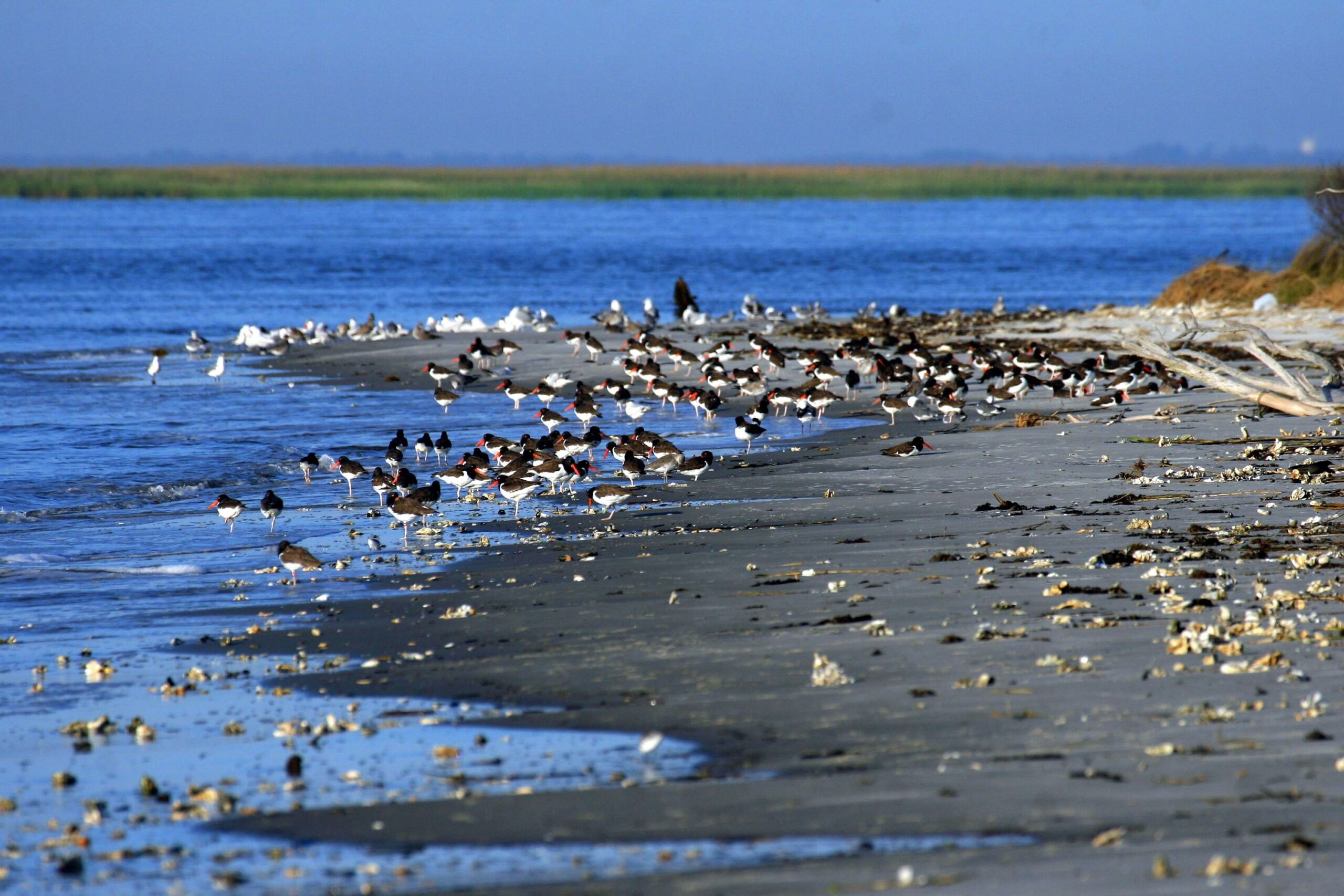Georgia’s Barrier Islands Recognized For Their Ecological Importance

Shorebirds gather at Wolf Island Refuge in Georgia.
U.S. Fish and Wildlife Service
Georgia’s barrier islands recently gained recognition for their importance for shorebirds. Environmental advocates say it’s a testament to how much natural land on the coast has been protected.
On a gray fall evening, the saltmarsh on the northern tip of St. Simons Island is quiet, except for distant boats and occasional birds chirping. The marsh grass has changed color for the season.
“This time of year it just turns the most amazing hue of golds and almost reddish color,” says Catherine Ridley, vice president of communication for the environmental group 100 Miles.
A spotted sandpiper flits away and wood storks fly overhead.
“I think I see a snowy egret out there, hunting for some prey,” says Ridley.
This isn’t that uncommon a scene in Georgia because so much of the coast is conserved by the state, national parks, nonprofits and private owners.
“Out of the 14 islands, 10 of those are only accessible by boat, and mostly undeveloped,” says Scott Coleman, ecological manager at Little St. Simons Island.
Coleman says that makes Georgia’s coast an important place for shorebirds, like the little sandpipers you might see running down a beach, or a threatened bird called the red knot that stops here on its long migration between the southern edge of South America and the Arctic Circle.
That’s why this fall, the Western Hemisphere Shorebird Reserve Network named Georgia’s barrier islands, a “landscape of hemispheric importance.”
“That’s obviously a bit of a mouthful,” says Ridley, but it boils down to recognition that Georgia’s coast is important.
The designation doesn’t come with any extra money or protect anything else, but Ridley says it’s a source of pride, and a reminder of how valuable the protected land is for the animals that live here year-round, or that are just migrating through.







